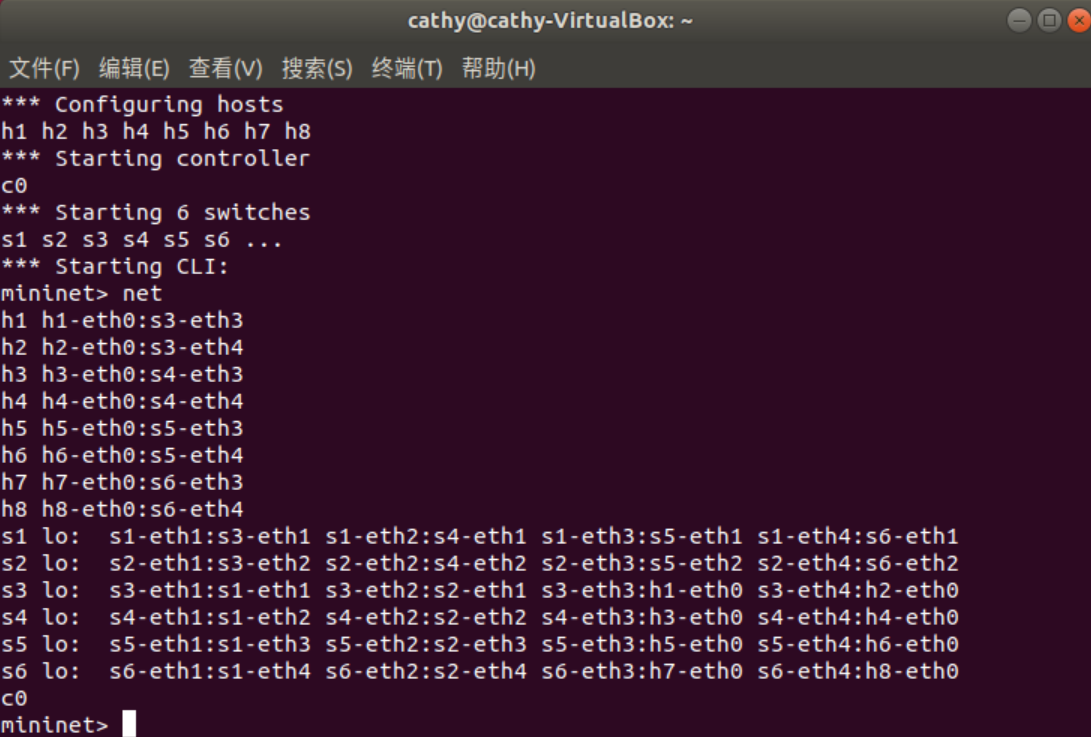1. 安装轻量级网络仿真工具Mininet
使用GitHub源码安装:
(1)从GitHub上获取mininet源码:
git clone https://github.com/mininet/mininet.git

(2)输入如下命令进行安装:
cd mininet/util
./install.sh

这边遇到了一点问题:

解决方法:将install.sh文件中的
git clone git://github.com/floodlight/oftest
改成
git clone http://github.com/floodlight/oftest
就解决了
等待一段时间后就安装成功啦
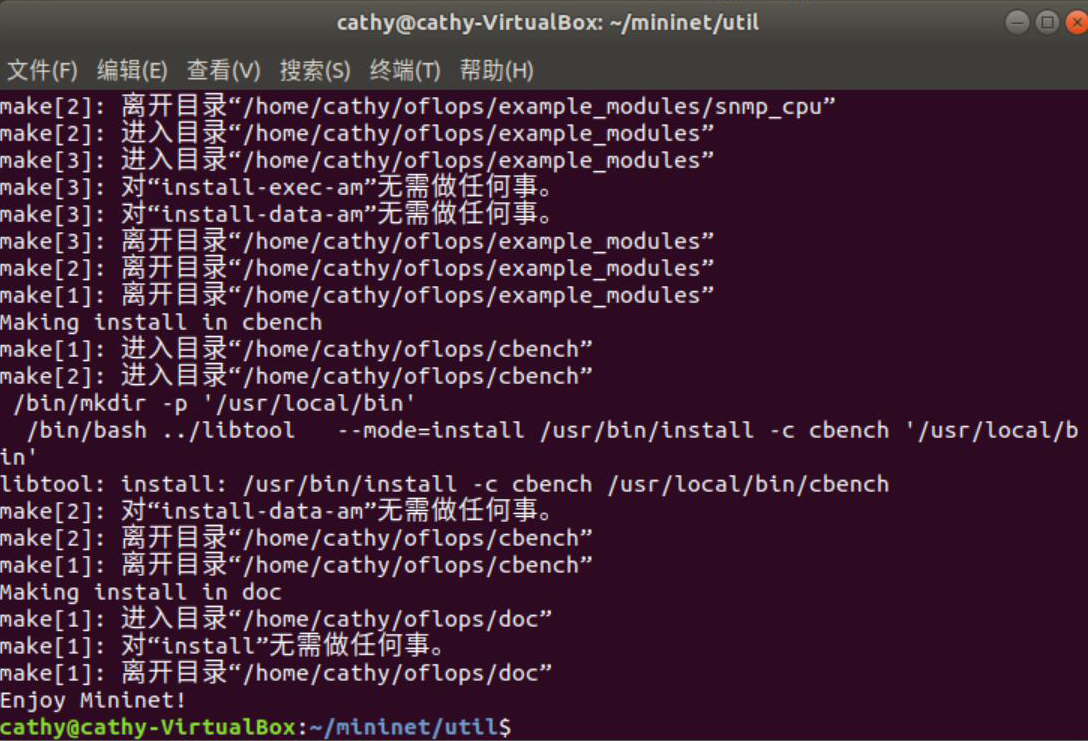
(3)安装完成后可使用mn --version查看所安装mininet的版本信息:
mn --version

2. 用字符命令搭建如下拓扑,要求写出命令
(1)

命令如下:
sudo mn --topo linear,3
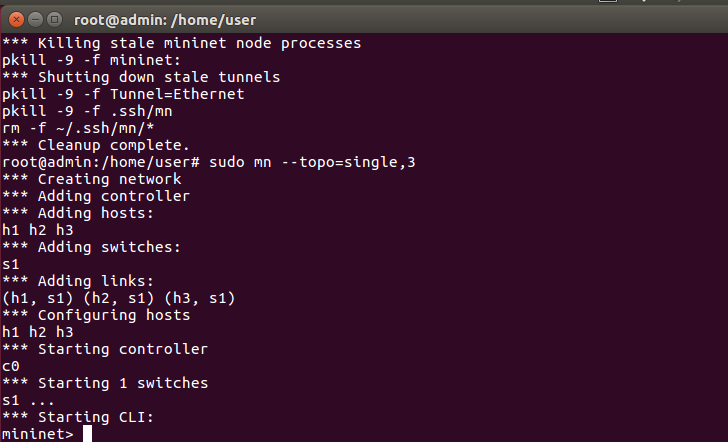
(2)
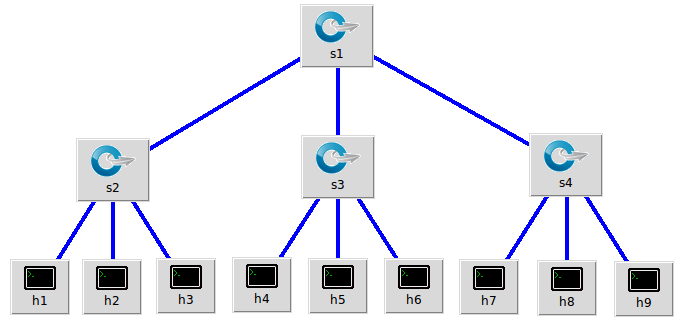
命令如下:
sudo mn --topo tree,fanout=3,depth=2
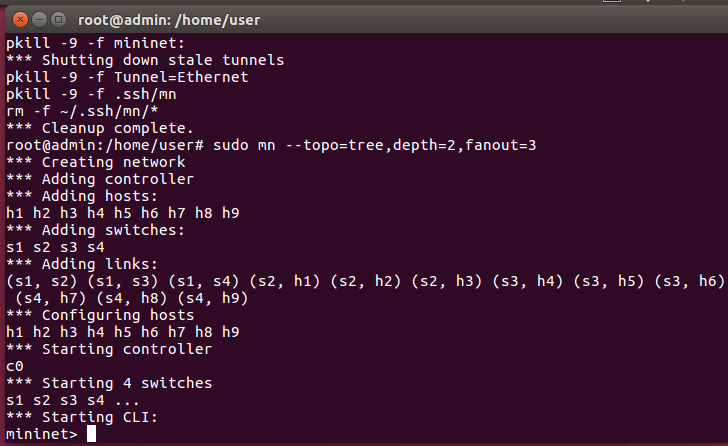
每次要新建拓扑时,需执行以下命令,防止上次操作对本次实验的影响。
sudo mn -c
3. 利用可视化工具搭建如下拓扑,并要求支持OpenFlow 1.0 1.1 1.2 1.3,设置h1(10.0.0.10)、h2(10.0.0.11)、h3(10.0.0.12),拓扑搭建完成后使用命令验证主机ip,查看拓扑端口连接情况。
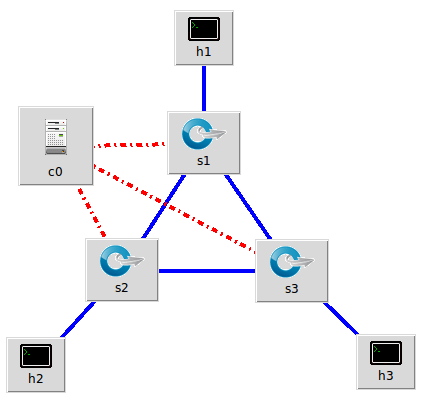
(1)在~/mininet/examples目录下打开终端,执行以下命令:
./miniedit.py
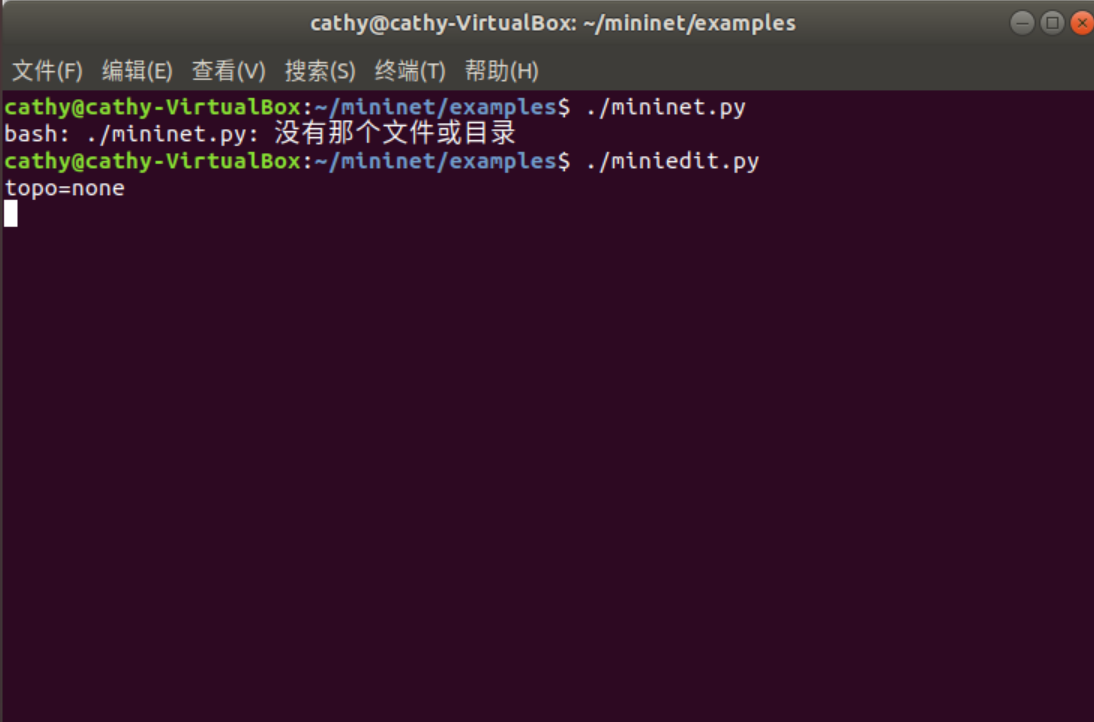
即可打开可视化控件,搭建拓扑:
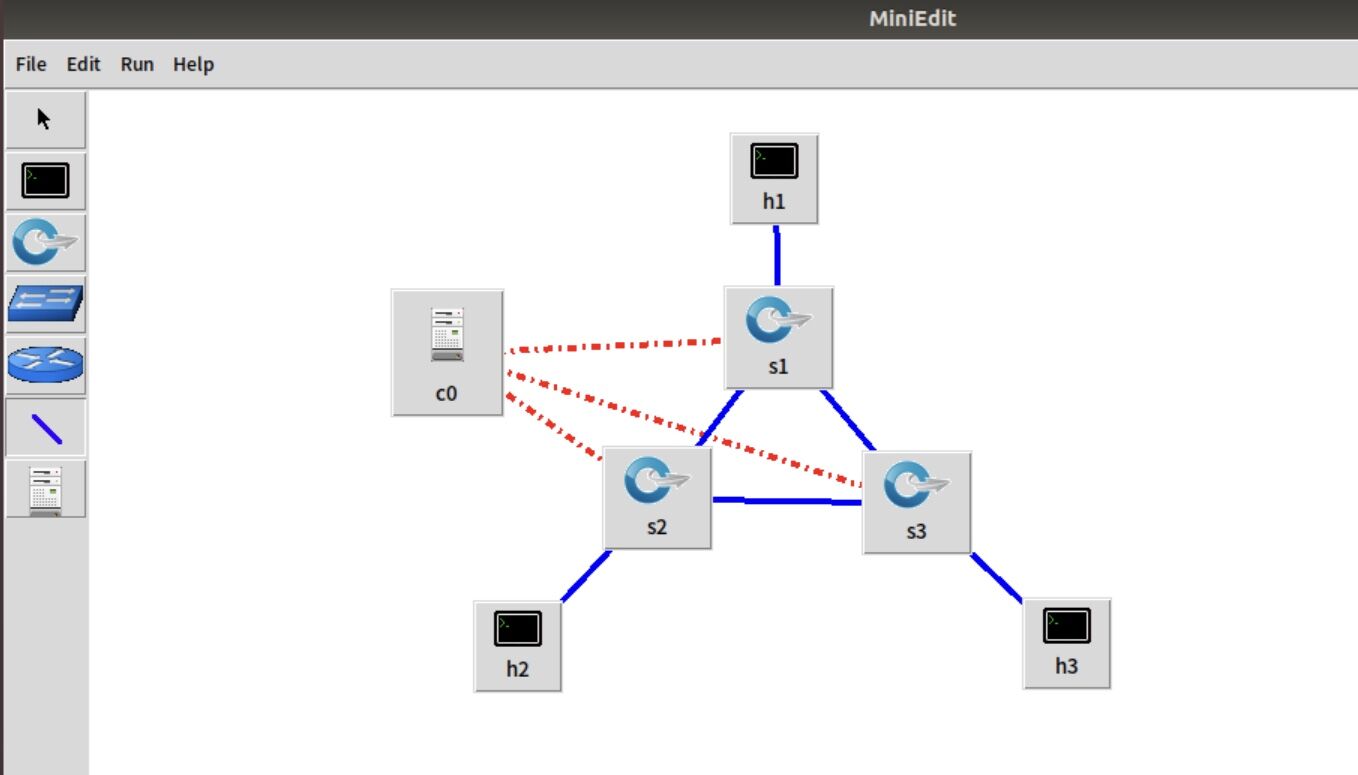
(2)设置h1(10.0.0.10)、h2(10.0.0.11)、h3(10.0.0.12),并在miniedit工具中开启CLI:
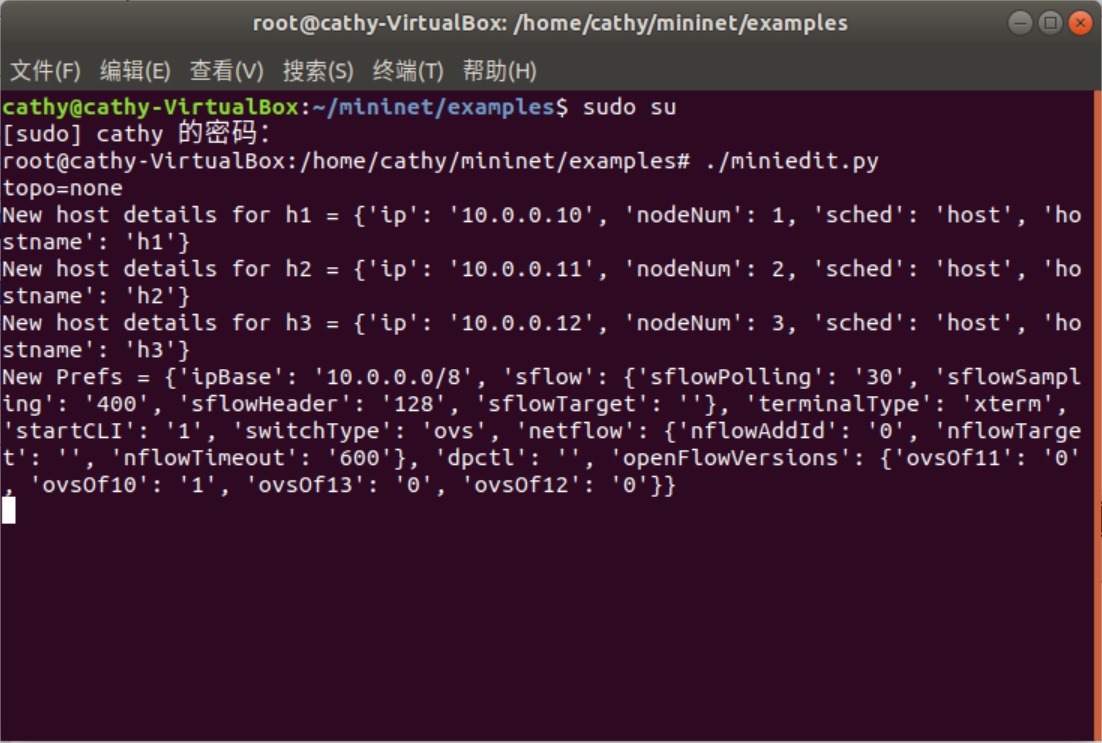
(3)点击Run按钮:
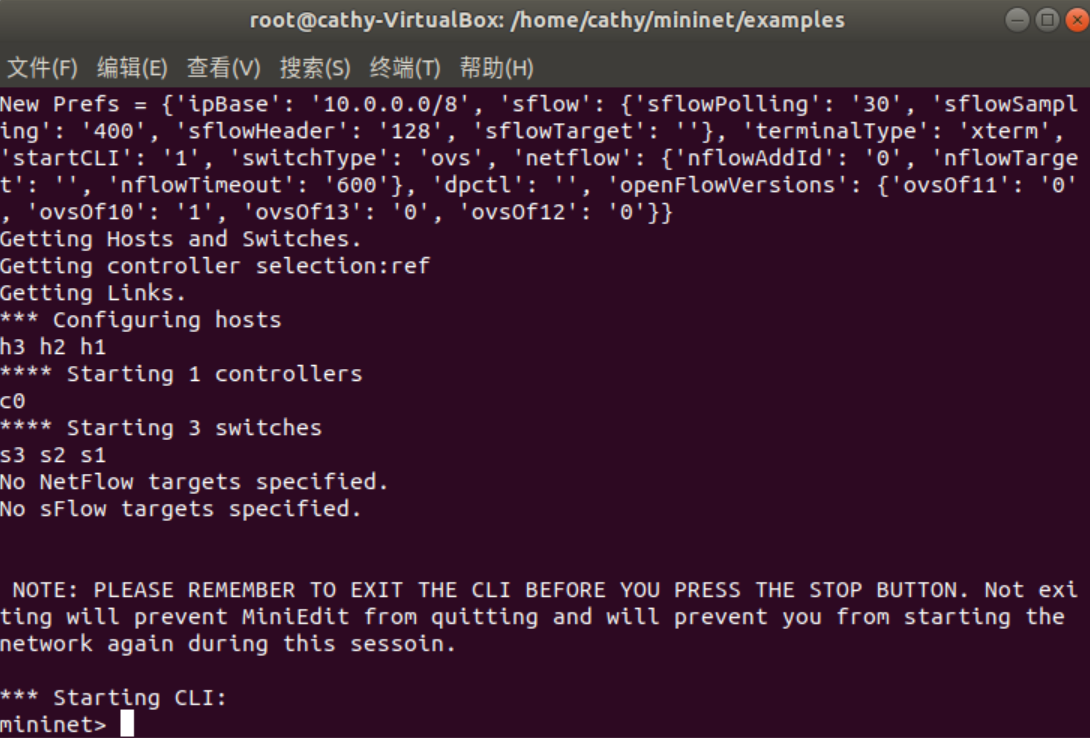
(4)通过net查看拓扑:
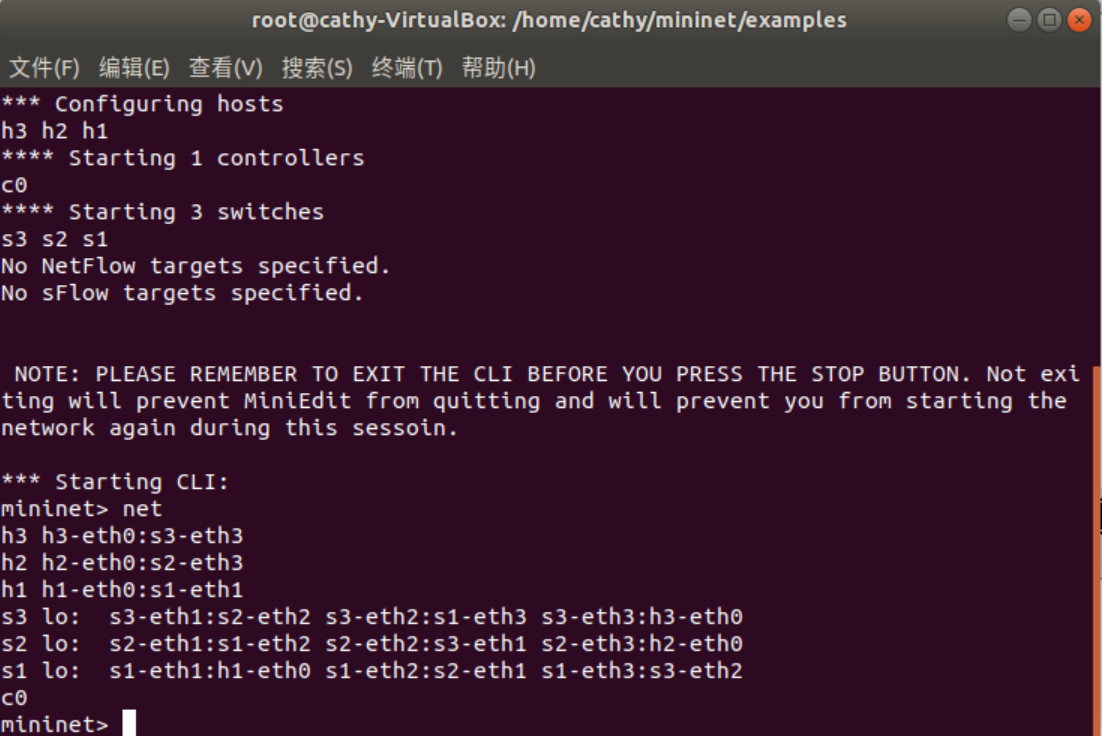
(5)使用xterm语句验证主机ip,查看拓扑端口连接情况:
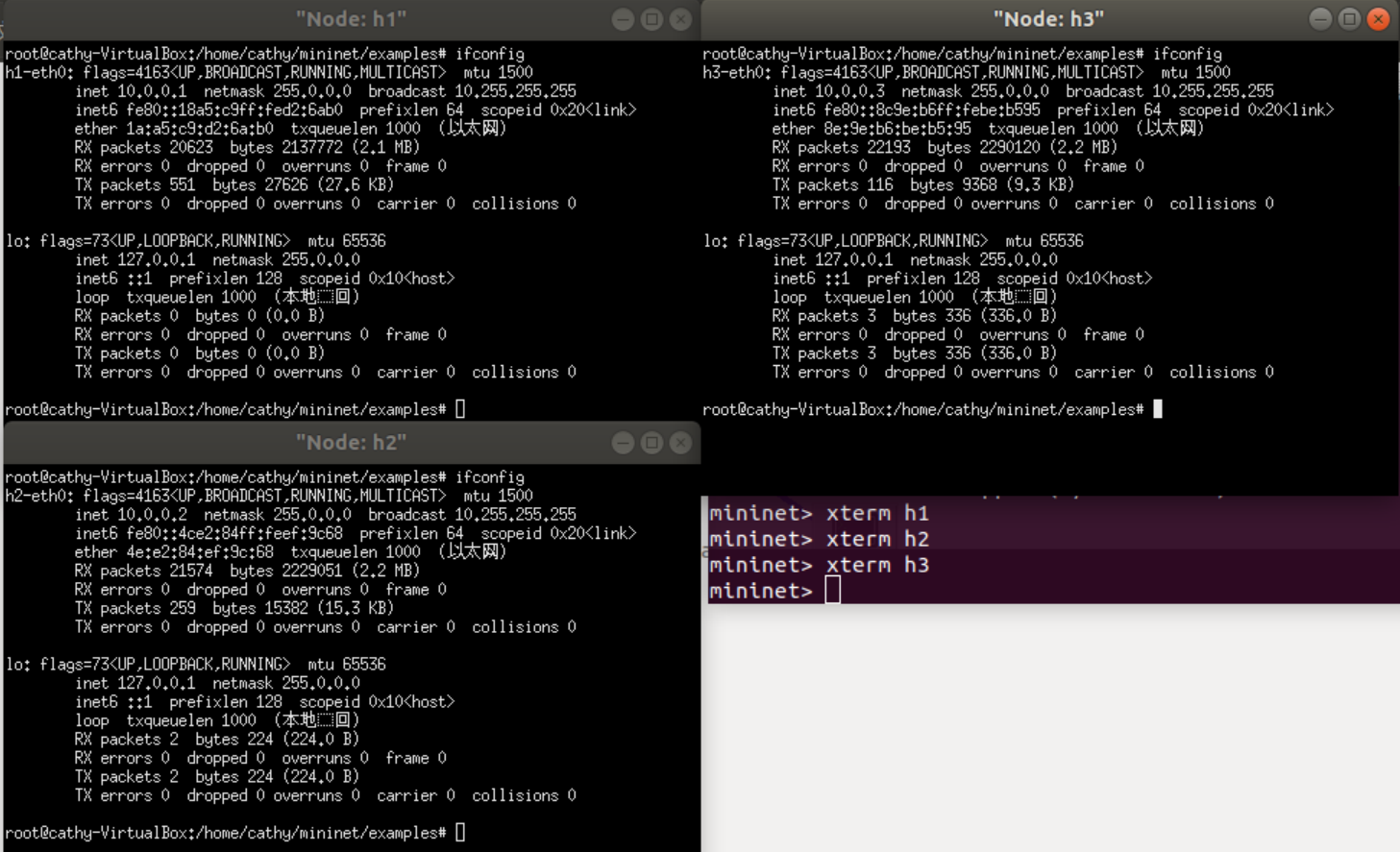
4. 利用Python脚本完成如下图所示的一个Fat-tree型的拓扑
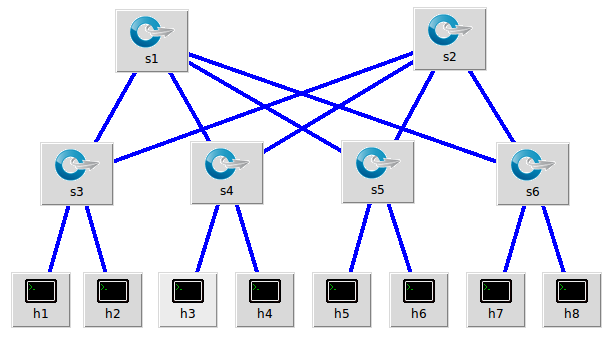
(1)python脚本代码:
#!/usr/bin/python
# sudo mn --custom fattree.py --topo mytopo --switch ovsk,protocols=OpenFlow10
"""Custom topology example
Adding the 'topos' dict with a key/value pair to generate our newly defined
topology enables one to pass in '--topo=mytopo' from the command line.
"""
from mininet.topo import Topo
from mininet.net import Mininet
from mininet.node import RemoteController,CPULimitedHost
from mininet.link import TCLink
from mininet.util import dumpNodeConnections
class MyTopo(Topo):
"Simple topology example."
def __init__(self):
"Create custom topo."
# Initialize topology
Topo.__init__(self)
L1 = 2
L2 = 4
c = []
a = []
# add core ovs
for i in range(L1):
sw = self.addSwitch('s{}'.format(i+1))
c.append(sw)
# add aggregation ovs
for i in range(L2):
sw = self.addSwitch('s{}'.format(L1+i+1))
a.append(sw)
# add links between core and aggregation ovs
for i in range(L1):
sw1 = c[i]
for sw2 in a[0: :1]:
self.addLink(sw2, sw1)
#add hosts and its links with aggregation ovs
count = 1
for sw1 in a:
for i in range(2):
host = self.addHost('h{}'.format(count))
self.addLink(sw1, host)
count += 1
topos = {'mytopo': (lambda: MyTopo())
}
(2)用以下命令生成拓扑:
sudo mn --custom fattree.py --topo mytopo --switch ovsk,protocols=OpenFlow10
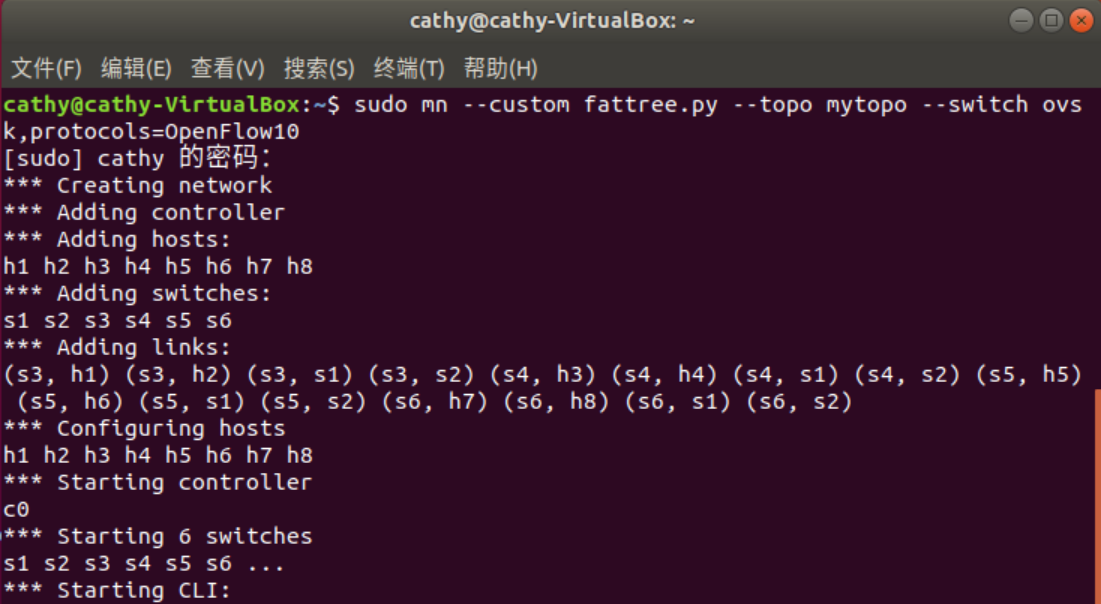
(3)使用net命令验证拓扑结构:
